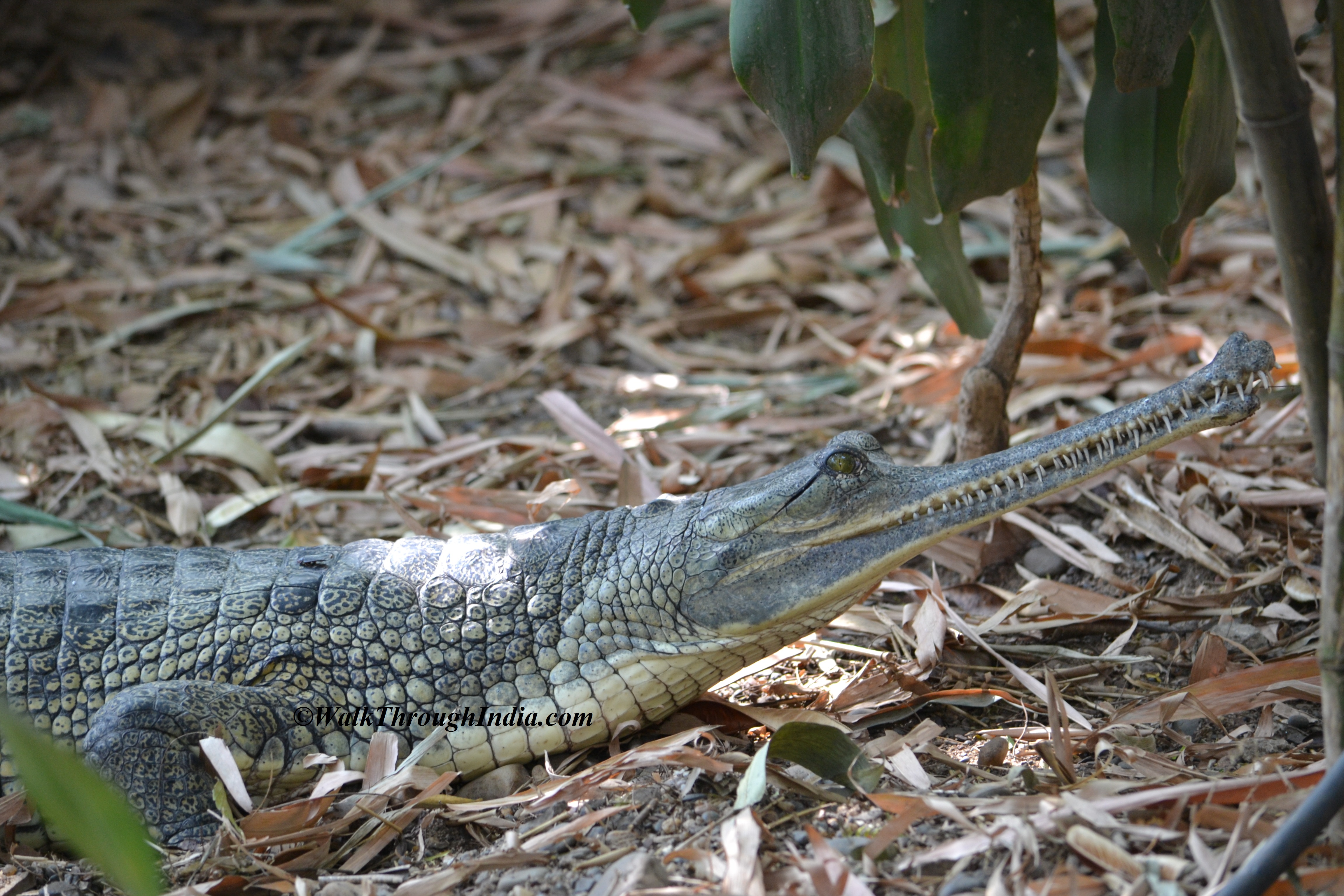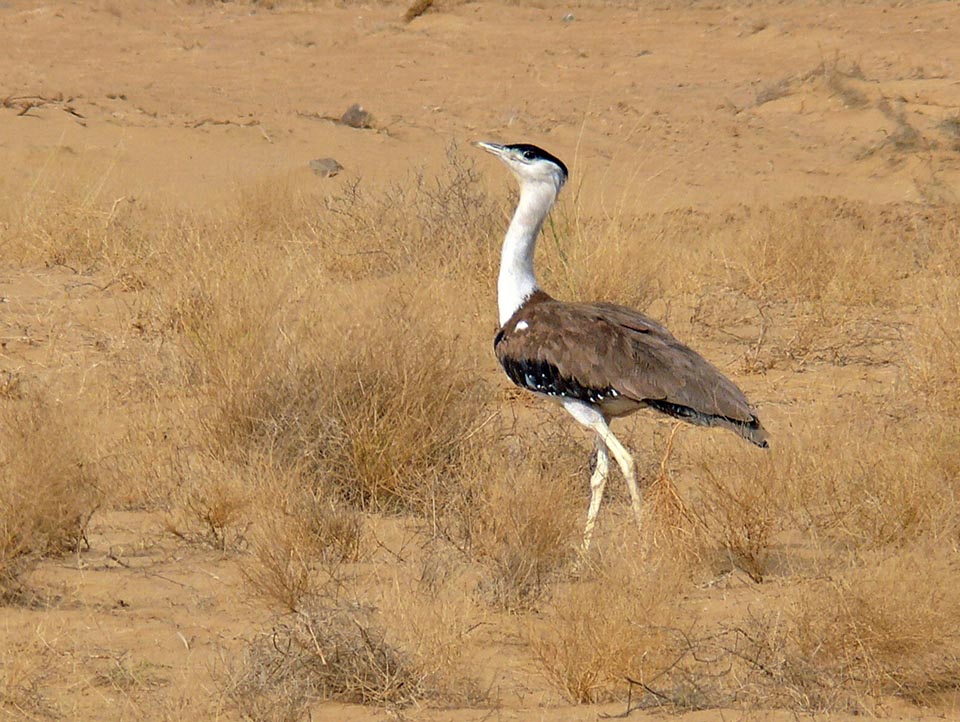21 Indian Species That Will Most Likely To Go Extinct in Next 10 Years
India is one of the mega biodiversity centers in the world and home to some of the magnificent creatures native to the subcontinent such as Gharial, Bengal Florican,Ganges Shark,Flying Squirrel and Forest Owlet. Some of these magnificent wild animals are on the verge of extinction because of habitat loss,Poaching,illegal hunting,capturing as pet and deforestation. Here is the list of beautiful and amazing Indian animals that will most likely go extinct in next 10 years.
Gharial

Gharial also called as fish-eating crocodile is one of the critically endangered species, native to the northern part of the Indian Subcontinent. This crocodilian speciecs used to inhabited in the major river of the Indian Subcontinent but now the population have declined because of overhunted for skins,killed by fishermen, water pollution and riverine habitat decreased as dams.
Malabar Civet

Malabar large-spotted civet is dusky gray viverrid listed as critically endangered with fewer than 250 mature individuals in the areas of South Malabar. Malabar civet is endemic to the Western Ghats of India but seriously threatened by hunting,deforestation,habitat loss and at the risk of extinction.
Himalayan Quail
Himalayan Quail is one of the rarest Galliformes species in the world, now found only in the western Himalayas in Uttarakhand. This medium-sized quail from pheasant family is feared extinct in 1876 but again seen at 2 locations near the hill station of Mussoorie.
Indian Bustard

Great Indian bustard is among the heaviest of the flying birds of India and listed as critically endangered species because of extremely small population. The large ground bird is looks like an ostrich found in semi-arid grasslands and dry plains of the Indian subcontinent, as few as 250 individuals are left in the wild.
Gooty Tarantula
The critically endangered Gooty Tarantula is a blue colour species of tarantula found in deciduous forest of Andhra Pradesh. Gooty sapphire ornamental tree spider is one of the largest spider found in India and considered to have venom that may cause intense pain.
Jerdon Courser

Jerdon’s courser is a rare species of bird currently found in the Eastern Ghats of Andhra Pradesh. This critically endangered species is endemic to southern India and has an extremely limited geographical range.
Forest Owlet

Forest owlet is one of the small owl that is endemic to central Indian forest also recorded in northern Maharashtra,Madhya Pradesh and western Orissa. The forest owlet population was estimated as less than 250 by Birdlife International and found only in protected areas of Maharashtra and Madhya Pradesh. This critically endangered species of bird is one of the five birds in Maharashtra who are on the verge of extinction.
Pink-Headed Duck

Pink-headed ducks are one of the rarest species of waterfowl found in India,found in parts of the Gangetic plains of India. It has been disappear from the wild because of habitat destruction but again occurred in eastern India,hence declared as critically endangered rather than extinct.
Gundia Frog
Gundia Indian Frog is one of the critically endangered species of frog found in the Western Ghats of India. The small size Indirana gundia frog threatened by habitat loss,harvesting of wood,road construction and intensive livestock production.
Indian Vultures

There are 9 species of vultures found living in India and most of them are in danger of extinction. The Indian vulture,Red-headed vulture and the white-rumped vulture species are classified as critically endangered, as thye have suffered maximum population decrease because of the veterinary drug diclofenac in India.
Kashmir Stag

Kashmir Stag is also called hangul is listed as critically endangered species of red deer native to India, found in dense riverine forest,
high valleys and mountains of the Kashmir Valley. This red deer subspecies is the State Animal of Jammu and Kashmir and the only surviving species of the red deer family in Kashmir, found in the Valley of Dachigam National Park. Image source-relivearth
River Terrapin
Northern river terrapin is a riverine turtle found only in parts pf West Bengal and Odisha. Indian river terrapin is one of the most critically endangered turtle species and Asia’s largest freshwater and brackish turtles.
Pygmy Hog

Pygmy hog is the smallest and rarest wild pig in the world, now only found in Manas National Park of Assam. This is critically endangered suid family mammal used to found in wet grasslands of Himalayan foothills but now only one viable population remains in the Manas Tiger Reserve.
Flying Squirrel

Namdapha flying squirrel is critically endangered nocturnal flying squirrel endemic to India,found in biodiversity hotspot of Arunachal Pradesh. The Namdapha National Park is third largest national park in India and one of the richest areas in biodiversity in India.
Elvira Rat
Elvira Rat is a species of rodent found only in the Eastern Ghats of Tamil Nadu state of India. This critically endangered species of rodent is on the verge of extinct due to habitat loss, conversion of forests and fuel wood collection.
Bugun Liocichla

Bugun liocichla is critically endangered species of passerine bird, found in hillsides covered with shrubs and small tree forest of Arunachal Pradesh. In 2006 Bugun liocichla is described as a new species of small babbler and currently spotted in Eaglenest Wildlife Sanctuary.
Himalayan Wolf

Himalayan wolf is a critically endangered canid species and a subspecies of the gray wolf, in the trans-Himalayan region of Jammu and Kashmir and Himachal Pradesh. Wolves are the biggest canid in the dog family and the Indian subcontinent includes three distinct wolf species Eurasian, Indian and Tibetan wolves.
Humpback Mahseer
Humpback Mahseer is highly esteemed food fish as well as an important game fish found in the Indian Peninsula. The iconic freshwater fish, the giant humpback Mahseer found in India is on the brink of extinction due to pollution, habitat loss and overfishing.
Ganges Shark
The Ganges Shark is one of the most critically endangered species of marine creature and one of the top 10 river monster of India. Requiem shark species is known to inhabit only in freshwater river system of Ganges River and the Brahmaputra River of eastern and northeastern India.
Sociable Lapwing

Sociable lapwing is a wader bird from lapwing family breeds on open grassland of north-west India. BirdLife International has categorised Sociable Lapwing bird as critically endangered due to habitat destruction and expected to extinct in the next decade.
Bengal Florican

The Bengal florican is one of the species of bustard family native to the Indian subcontinent. Critically Endangered Bengal Florican live in open tall grassland habitats from Uttar Pradesh to the Terai of Assam but the population has decreased dramatically and Bengal Florican is now on the verge of extinction.








